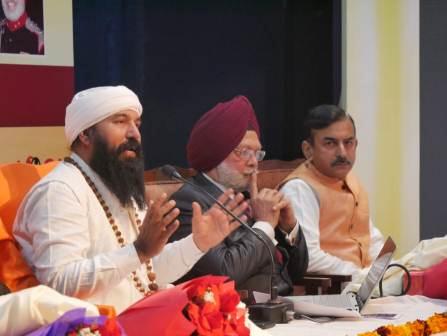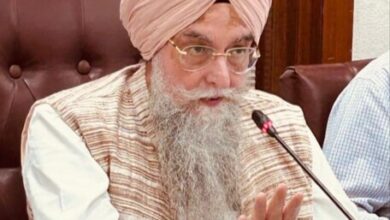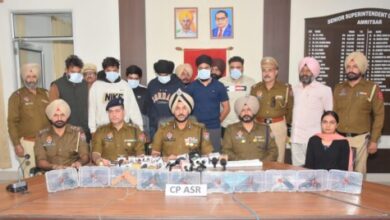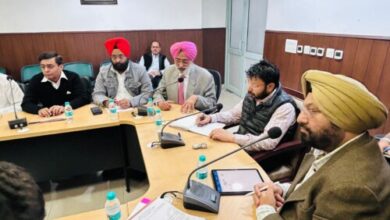Lord Ram has geographical, spiritual relations with Punjab
While quoting Gurbani, Swami Rajeshwaranand shares Lord Ram’s deep relationship with Punjabiyat

— Lord Ram has deep relationship with Punjab and Punjabiyat: Swami Rajeshwaranand said while giving examples from Gurbani
Chandigarh, January 14 updatepunjab : “The geographical and spiritual connection of Lord Shri Ram with Punjab and Punjabiyat is so deep as all the poets, philosophers, scholars and historians associated with Punjabiyat have already talked about it. But, the greatest authentic spiritual fact is from ‘World Guru’ Sri Guru Granth Sahib ji, wherein Lord Ram is described as incarnation of Treta Yug”, said Acharya Swami Rajeshwaranand, while sharing his view on the topic ‘Sarv Sanjhi Punjabiyat’.
The special lecture was organized by Joshi Foundation in Chandigarh on Sunday, in which Chancellor of Central University of Himachal Pradesh Professor Harmohinder Singh Bedi and Major General I.P. Singh (VSM) were special guests, accompanied by Joshi Foundation Chairman Vineet Joshi and President Saurabh Joshi.
Swami Rajeshwaranand, in highlighting the geographical ties between Lord Ram and Punjab, asserted that numerous places in the region bear connections to Lord Ram. He mentioned that the village ‘Ghuram’ on Pehowa Road, situated approximately 30 kilometers from Patiala, is known as ‘Kaushalyapuram,’ serving as the maternal village of Lord Ram (the birthplace of his mother Kaushalya).
in Kharar, ‘Ajj Sarovar’ is named after Maharaja Ajj, Lord Ram’s grandfather
Additionally, in Kharar, ‘Ajj Sarovar’ is named after Maharaja Ajj, Lord Ram’s grandfather. Swami Rajeshwaranand stated that Luv-Kush received their education in scriptures and weapons at Maharishi Valmiki’s ashram in Amritsar, Punjab, and emphasized that Maharishi Valmiki had spent a significant portion of his life in Punjab, being the author of Ramayana.
The connection between the city of Ayodhya and Sikhism was underscored by Swami Rajeshwaranand, who noted that three Sikh Gurus had visited the place. Guru Nanak Dev Ji, the first Guru, sat at Brahmakund Ghat in 1557 and conducted satsang under a Bel tree, which is still revered today at Gurudwara Brahmakund Sahib in Ayodhya. The ninth Guru, Shri Guru Tegh Bahadur Ji, also visited Ayodhya, leaving his Charan Paduka (Khadau) with a Brahmin devotee. Swami Rajeshwaranand mentioned that the tenth Guru, Shri Guru Gobind Singh Ji, fed monkeys during his visit, a tradition that persists. The Gurudwara Brahmakund houses Guru’s weapons, arrows, daggers, whirligigs, and a handwritten BEED.
Swami Rajeshwaranand supported his spiritual perspective by referencing a Gurbani verse and Bhai Gurdas Ji’s VAAR. He highlighted Guru Gobind Singh Ji’s description of Lord Ram in Sri Dasam Granth, referring to Lord Ram as an incarnation of Treta in the composition “Rama Avtaar.”
The Swami noted that Guru Nanak Dev Ji and Babar were contemporaries and detailed Babar’s atrocities in Sri Guru Granth Sahib, where the army had demolished the Ram temple and built the Babri Masjid.
Concluding his speech, Swami Rajeshwaranand emphasized the geographical and spiritual connection between Lord Ram and Punjab. He urged people to come together on January 22, lighting a lamp (diva) in their homes to remember Shri Ram Ji. He concluded by encouraging individuals to illuminate their minds and bring Lord Ram’s messages to life, fostering love and brotherhood in Punjab and the world.




